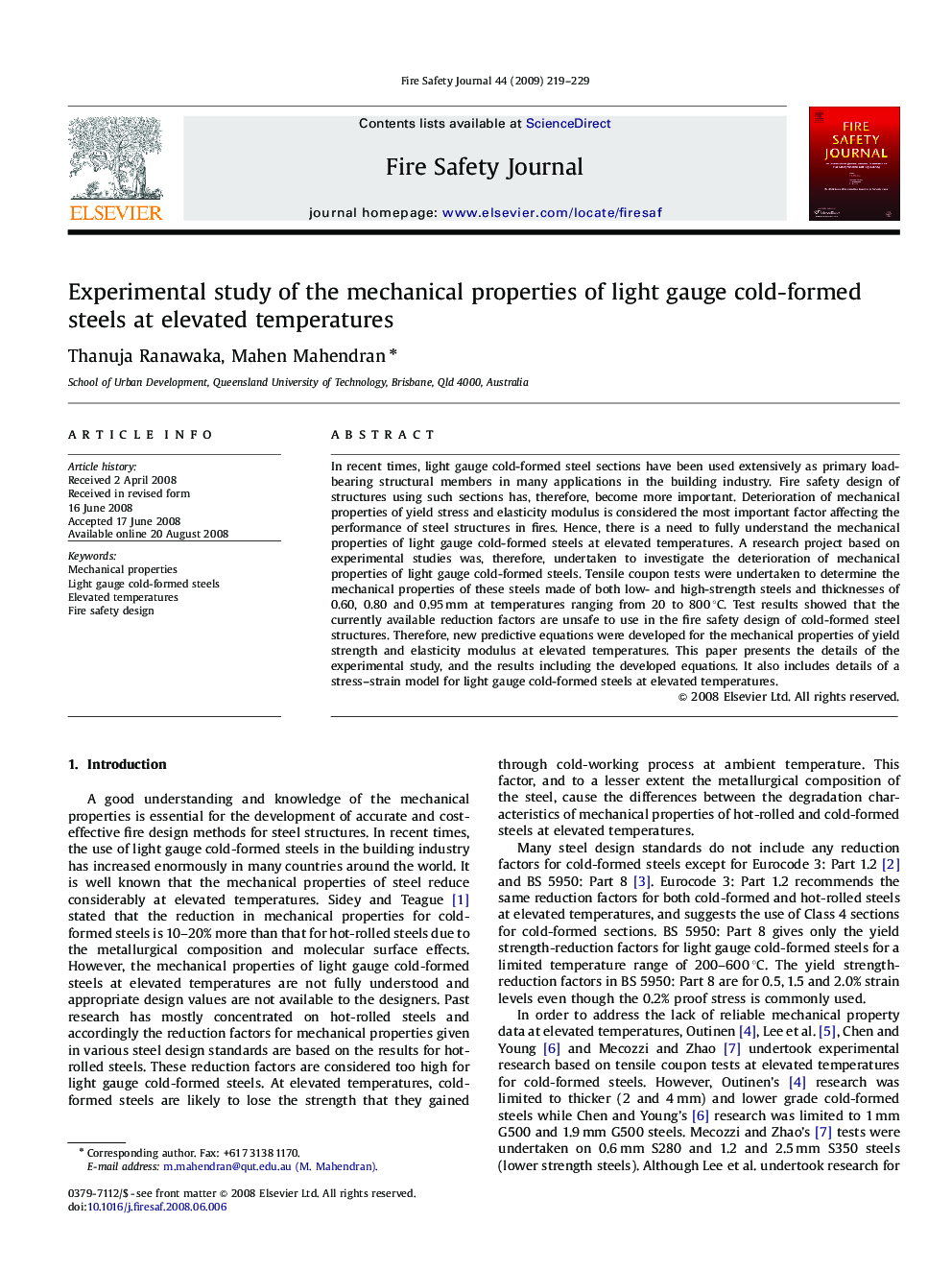| Article ID | Journal | Published Year | Pages | File Type |
|---|---|---|---|---|
| 270468 | Fire Safety Journal | 2009 | 11 Pages |
In recent times, light gauge cold-formed steel sections have been used extensively as primary load-bearing structural members in many applications in the building industry. Fire safety design of structures using such sections has, therefore, become more important. Deterioration of mechanical properties of yield stress and elasticity modulus is considered the most important factor affecting the performance of steel structures in fires. Hence, there is a need to fully understand the mechanical properties of light gauge cold-formed steels at elevated temperatures. A research project based on experimental studies was, therefore, undertaken to investigate the deterioration of mechanical properties of light gauge cold-formed steels. Tensile coupon tests were undertaken to determine the mechanical properties of these steels made of both low- and high-strength steels and thicknesses of 0.60, 0.80 and 0.95 mm at temperatures ranging from 20 to 800 °C. Test results showed that the currently available reduction factors are unsafe to use in the fire safety design of cold-formed steel structures. Therefore, new predictive equations were developed for the mechanical properties of yield strength and elasticity modulus at elevated temperatures. This paper presents the details of the experimental study, and the results including the developed equations. It also includes details of a stress–strain model for light gauge cold-formed steels at elevated temperatures.
